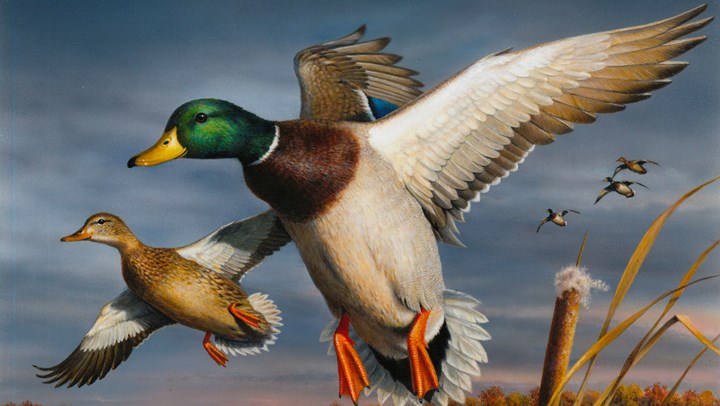
by Brian McCombie - Wednesday, October 25, 2017

Technically, only two people can win the annual Federal Duck Stamp Art Contest—an adult and a youth, each in their respective categories—for their artistic depictions of waterfowl, with the winning entries used for the upcoming year’s Federal and Junior Duck Stamps. But the real winners are the millions of hunters who buy the stamps and promote conservation across the country.
For those who may not know, by law, 98 percent of the funds raised through Federal Duck Stamp sales are used directly for the protection of wetlands and associated habitats. By purchasing a Duck Stamp each year, hunters continue to fund one of the most successful conservation programs created to ensure there will be land for wildlife and hunters for generations to come.
The Junior Duck Stamp Art Contest is the culmination of the Federal Junior Duck Stamp Conservation and Design Program that began in 1989. The program is a dynamic art- and science-based curriculum that teaches wetland and waterfowl conservation to students in kindergarten through high school. The first Junior Duck Stamp Art Contest was in 1993 and the program was recognized by Congress in 1994 with the enactment of the Junior Duck Stamp Conservation and Design Program Act. By 2000, the program included all 50 states, the District of Columbia and the United States territories. The Junior Duck Stamps are sold for $5 apiece with 100 percent of the revenue going toward supporting recognition and environmental education activities for students who participate in the program.
The winners of the Federal and Junior Duck Stamp Art Contest deserve a big hand. They are:
The history of the Duck Stamp begins in the terrible Dust Bowl years of the 1930s when tens of thousands of acres of wetlands began drying up and disappearing. In 1934, President Franklin D. Roosevelt signed the Migratory Bird Hunting Stamp Act (or Duck Stamp Act) to help stop the destruction of wetlands vital to the survival of migratory waterfowl. Under the Act, all waterfowl hunters 16 years of age and over were required to buy and carry a Migratory Bird Hunting and Conservation Stamp, commonly known as a “Duck Stamp,” every year.
Initially, well-known American wildlife artists were asked to submit artwork for the stamps, but in 1949 the U.S. Fish and Wildlife Service (USFWS) launched the first Duck Stamp Art Contest, open to any U.S. artist who wished to enter. Decades later, the Federal Duck Stamp Art Contest remains the only art competition of its kind sponsored by the U.S. government—and anyone may enter. While there is no monetary reward for winning this prestigious contest, the artists are permitted to sell reprints of their winning artwork.
Today, the Duck Stamp sells for $25 and raises nearly $40 million each year to provide critical funds to conserve and protect wetland habitats in the National Wildlife Refuge system. Since 1934, more than $800 million has gone toward protecting more than 5.7 million acres of habitat. Just as impressive: More than 300 national wildlife refuges were created or have been expanded using Federal Duck Stamp dollars.
Little wonder the Federal Duck Stamp Program has been called one of the most successful conservation programs ever initiated. The program is just one great example of how much hunters’ dollars do to support wildlife, conserve habitats and preserve our cherished hunting heritage.
For more information on how hunters’ dollars benefit fish and wildlife conservation, habitat restoration and the economy—both in the United States and abroad—check out the following NRAHLF.org articles:E-mail your comments/questions about this site to:
[email protected]
